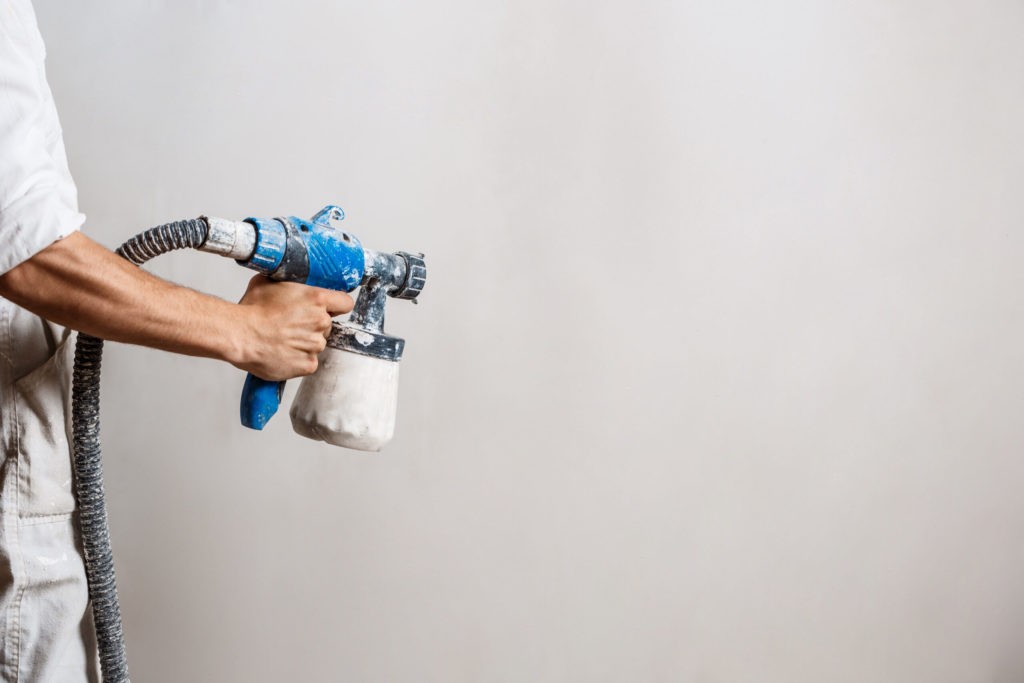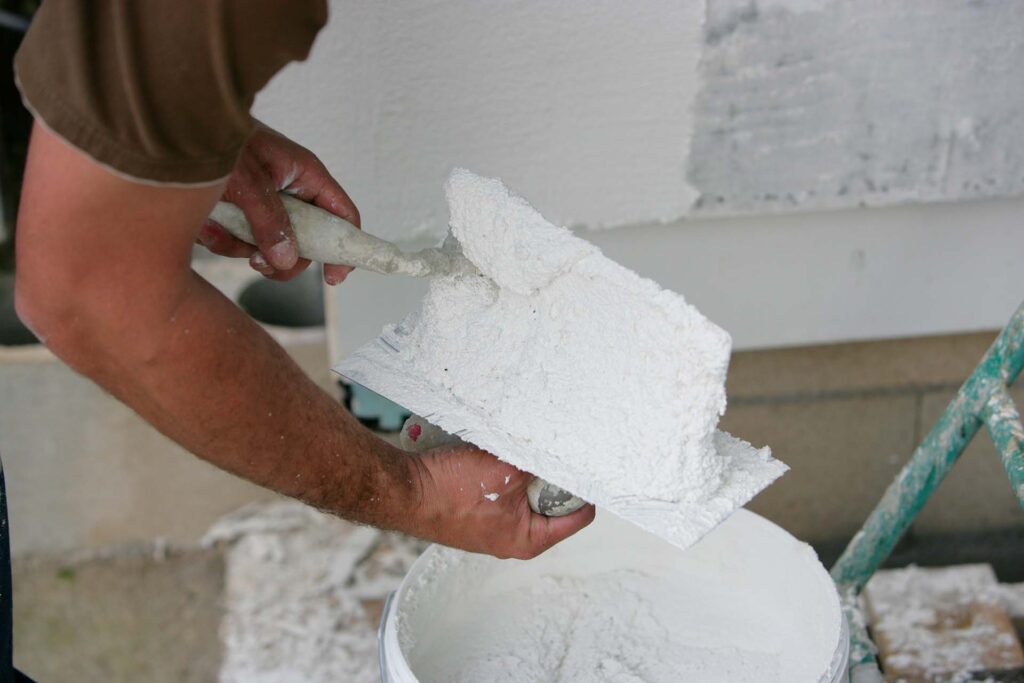Pebbledash is a type of exterior wall coating that is made up of small pebbles or stones that are embedded into a base of cement or mortar. This type of finish is commonly found in homes and buildings, particularly in the UK and Europe.
Many homeowners and building owners are looking for ways to update or refresh the look of their properties, and this post will explore the feasibility of using spray paint to achieve this.

Can you Spray Over Pebbledash?
Spraying over a pebble dash involves applying a layer of paint or other coating material to the surface of the pebble dash using a paint sprayer. This process can be used to change the colour of the pebble-dash or to protect it from the elements.
There are several benefits to spraying over pebble dash, including faster application time, even coverage, and reduced waste compared to traditional painting methods.
Additionally, spraying can help to preserve the texture and appearance of the pebble dash while also providing a new layer of protection.
Despite the benefits, there are also some disadvantages to consider when spraying over pebble dash. One potential issue is that the spray may not adhere well to the rough surface of the pebble dash, which could lead to peeling or flaking.
Additionally, the spraying process can be messy, and there is a risk of overspray getting on surrounding surfaces. Finally, there may be compatibility issues between the pebble dash and the coating material used, which could impact the overall appearance and durability of the finish.

Preparation Before Spraying
- Cleaning the surface: Before spraying over the pebble dash, it is important to thoroughly clean the surface. This may include washing the wall with a mild detergent, rinsing it with water, and allowing it to dry completely.
Any dirt, grime, or other contaminants can impact the adhesion of the spray paint, so it is important to have a clean surface to work with.
2. Repairing any cracks or damage: Any cracks, chips, or other damage to the pebble dash should be repaired before spraying.
This may include filling in cracks with a suitable filler and sanding them smooth or patching any larger areas of damage with a matching pebble dash material.
3. Choosing the right paint and equipment: To achieve a successful spray paint job over a pebble dash, it is important to choose the right paint and equipment.
This may include selecting a paint that is compatible with the type of pebble dash and the climate conditions in the area, as well as choosing a paint sprayer that is capable of handling the rough surface of the pebble dash.
Additionally, protective gear such as gloves, masks, and eye protection should be worn to minimise exposure to paint fumes and to prevent overspray from getting on skin or clothing.
The Spraying Process
- Preparation: As mentioned above, clean the surface and repair any cracks or damage before starting the spraying process.
- Choose the right paint and equipment: Select a paint that is suitable for the type of pebble dash and the climate conditions in the area. Make sure to choose a paint sprayer that can handle the rough surface of the pebble dash.
- Prime the surface: If necessary, prime the surface with a suitable primer before applying the paint.
- Set up the sprayer: Fill the paint sprayer with paint, adjust the settings, and practice spraying on a test surface to get a feel for the equipment.
- Begin spraying: Start from the top of the wall and work downwards, overlapping each pass slightly to ensure even coverage. Hold the sprayer about 12-18 inches from the surface, and keep the sprayer moving to prevent drips and runs.
- Allow to dry: Allow the paint to dry completely according to the manufacturer’s instructions before applying additional coats or touching up any areas.
Tips for a successful spraying job:
- Work in manageable sections: To ensure even coverage, break the wall down into smaller sections and work on one section at a time.
- Use masking tape: Use masking tape to protect any surrounding surfaces that you don’t want to get paint on.
- Apply light, even coats: To prevent drips and runs, apply light, even coats of paint, allowing each coat to dry before applying additional coats.
- Keep the sprayer moving: Keep the sprayer moving to prevent drips and runs, and to ensure even coverage.
Common mistakes to avoid
- Not cleaning the surface: Neglecting to clean the surface thoroughly can result in poor adhesion and flaking of the paint.
- Not repairing cracks or damage: Ignoring any cracks or damage to the pebble dash before spraying can result in visible defects in the finish.
- Not priming the surface: If necessary, failing to prime the surface can impact the adhesion of the paint.
- Using the wrong type of paint: Choosing a paint that is not compatible with the type of pebble dash or the climate conditions can result in poor performance and durability.
- Applying too thick of a coat: Applying too thick of a coat of paint can result in drips and runs, and can also impact the drying time and appearance of the finish.
Maintenance of Sprayed Pebbledash
Cleaning and maintenance tips:
- Regular cleaning: Regular cleaning with a soft cloth and mild soap can help to keep the sprayed pebble dash looking fresh and new.
- Avoid harsh chemicals: Avoid using harsh chemicals or abrasive materials when cleaning the surface, as they can damage the paint finish.
- Protect from extreme weather conditions: To help extend the life of the paint, protect the surface from extreme weather conditions, such as excessive heat, cold, and moisture.
Repairing and touch-up tips:
- Repair any cracks or damage: Regularly inspect the surface for any cracks or damage, and repair as needed to prevent further deterioration.
- Touch up areas that have been damaged: If any areas of the sprayed pebble dash have been damaged, touch them up as soon as possible to prevent further damage and maintain the overall appearance of the surface.
- Store excess paint: Store any excess paint from the original job in a safe place, in case touch-ups are needed in the future.
Conclusion
Spraying over a pebble dash can be a cost-effective and efficient way to update the appearance of a wall or other surface. However, it is important to properly prepare the surface, choose the right paint and equipment, and follow the steps of the spraying process carefully in order to achieve a successful outcome.





